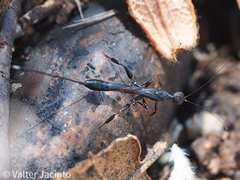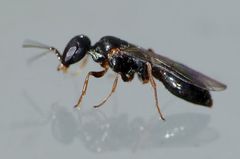Rhinoceros beetle
Dynastinae
Insecta Dynastinae, commonly referred to as the rhinoceros beetles, are a subfamily of the Scarabaeidae family. These beetles are renowned for their impressive size and distinctive horn-like structures, which are particularly prominent in males. In the Comunidad Valenciana, these intriguing insects play a vital role in local ecosystems.
Here are some key features of the Dynastinae:
- Appearance: Rhinoceros beetles can be spotted due to their large and robust bodies. Males typically possess one or more horns on their head, used for battles with other males.
- Size: They are among the largest beetles, with some species in the subfamily reaching lengths of up to 15 cm, although those found in the Comunidad Valenciana are typically smaller.
- Diet: The larvae primarily feed on decaying plant material, making them essential decomposers in their environment. Adults may feed on nectar, plant sap, or fruit.
- Habitat: Dynastinae beetles often inhabit forests and regions with abundant vegetation, where they can find decaying matter to feed their larvae.
- Behavior: Mostly nocturnal, these beetles are more active during nighttime, which helps them avoid predators that are more prevalent during daylight hours.
- Local Significance: In the Comunidad Valenciana, these beetles, known as "escarabajos rinoceronte," contribute significantly to the maintenance of healthy ecosystems by recycling nutrients back into the soil through their decomposing activities.
Rhinoceros beetles are not only fascinating due to their size and appearance but also are vital to ecological balance and nutrient cycles in their habitats. Observing these creatures can offer insights into the complex interactions within natural environments in the Comunidad Valenciana.







